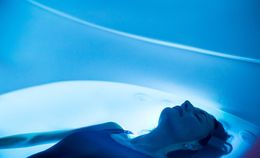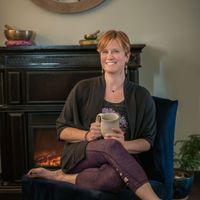Alzheimer's and dementia is not only for the person who is experiencing it but also for the family who has a family member experiencing dementia. This can lead to the pursuit of holistic and natural therapies, and treatments that can help manage and help with the symptoms associated with dementia.
Craniosacral therapy is one such option of a holistic treatment option.
How Craniosacral Therapy will Help Dementia Patients
CranioSacral Therapy (CST) is a noninvasive therapy that improves the internal environment of the central nervous system. It eases the severity of the symptoms and slows the deterioration process. CST can also serve as a prophylactic measure as it improves the circulation of the cerebrospinal fluid.
5 Craniosacral Techniques Combat Dementia
Here is a list of five ways craniosacral therapy techniques can work to combat dementia:
1. Lower Sympathetic Tone
Many people are unaware anxiety and stress negatively impact the body's capacity to operate optimally. The buildup of toxins and inadequate sleep are some of the side effects that come from this. Craniosacral therapy helps to reduce the sympathetic tone, which then stimulates the body to get a good night rest and eliminate unwanted toxins..
2. Improve Overall Brain and Memory functions
As we age, we develop decreased abilities to recollect specific memories. Craniosacral therapy improves the movement of bodily fluids needed for optimal brain function. The interstitial fluid, cerebrospinal fluid (CSF) and blood, are key components that support the brain ability to perform optimally. When there is an issue with these components, it reduces the level of oxygen the brain receives; thereby, causing it to have difficulty in carrying out natural processes such as memory retention. Craniosacral therapy boosts the movement of fluids, thus enhancing memory utilities.
3. Increase Flow of Cerebrospinal Fluid
CST improves the movement of cerebrospinal fluid (CSF). This bodily fluid is found around the brain and spine controlling immunological and mechanical security inside the skull. It helps remove pollutants, regulate blood flow, and balance circulation. As we age, we produce less cerebrospinal fluid, thereby putting us at risk for health complications and aging. With the Upledger's "Still Point Technique," these issues are counteracted, eliminating toxins and improving overall brain function.
4. Recovery from Concussions and Brain Trauma
Studies have shown there are similarities between brain scans of people diagnosed with Alzheimer's and individuals with concussions. These impairments affect the brain's functionality. A concussion is regularly seen in professional NFL players. An NFL player, Ricky Williams, a world-renowned football athlete, testified about the value of craniosacral therapy in his concussion treatment and recovery. Football is a high-intensity game, and if CST can be used at that level, why won't it help the 5 million American people living with dementia?
5. Reduce Inflammation of the Brain and Body
Inflammation of the brain can predispose an individual to dementia and Alzheimers, craniosacral therapy is an effective solution to lessen the symptoms. Poor eating habits, stress, and other factors can trigger inflammation of the body which then metastasize into the faculties of the brain. Craniosacral therapy will boost the immune system by reinforcing the body natural immune system, ultimately lowering inflammation.
Number of Sessions are Recommended?
The report of a study published in the Journal of Gerontological Nursing explored the effects of CST in individuals with dementia. The results showed a reduction in dementia symptoms in the subject which was validated by his/her caregiver. For this study, craniosacral therapy was administered by a certified craniosacral therapist for 6 weeks. The baseline data, when compared with the corresponding 6 weeks: result, showed significant improvement in dementia symptoms.
However, your number of sessions and the length will be determined by your therapist. Recommendations will be based on the evaluation and feedback from your body.
Cost
The average price per session in the United States is $70-$170. The total cost that you may find yourself spending on craniosacral therapy will depend on the number of sessions you end up needing, the city where you live, and the practitioner that you choose. For more information, read: How Much Does Craniosacral Therapy Cost?
References:
(n.d.). Retrieved April 11, 2019, from http://www.upledger.org/what-we-do/concussion-program.php
(n.d.). Retrieved April 11, 2019, from http://idrp.pbrc.edu/faq.htm
Dementia Statistics. (n.d.). Retrieved April 11, 2019, from http://www.who.int/mediacentre/factsheets/fs362/en/
Dementia: What pharmacists need to know. (2014). The Pharmaceutical Journal. doi:10.1211/pj.2014.20066261. Retrieved April 11, 2019, from https://www.ncbi.nlm.nih.gov/pubmed/28405256
Gerdner, L. A., Hart, L. K., & Zimmerman, M. B. (2008). Craniosacral Still Point Technique. Journal of Gerontological Nursing,34(3), 36-45. doi:10.3928/00989134-20080301-04. Retrieved April 11, 2019, from https://www.iahe.com/docs/articles/CSTDementiaArticle.pdf
Giovannoni, G. (2017). Should we rebrand multiple sclerosis a dementia? Multiple Sclerosis and Related Disorders,12, 79-81. doi:10.1016/j.msard.2017.01.008. Retrieved April 11, 2019, from https://www.ncbi.nlm.nih.gov/pubmed/28283112
Kaul, M. (2009). HIV-1 associated dementia: Update on pathological mechanisms and therapeutic approaches. Current Opinion in Neurology,22(3), 315-320. doi:10.1097/wco.0b013e328329cf3c. Retrieved April 11, 2019, from https://www.ncbi.nlm.nih.gov/pubmed/19300249
What Is Dementia? Symptoms, Types and Diagnosis. (n.d.). Retrieved April 11, 2019, from https://www.nia.nih.gov/health/types-dementia
Upledger, J. (n.d.). Craniosacral Still Point Technique. Retrieved April 11, 2019, from https://www.iahe.com/docs/articles/CSTDementiaArticle.pdf




















